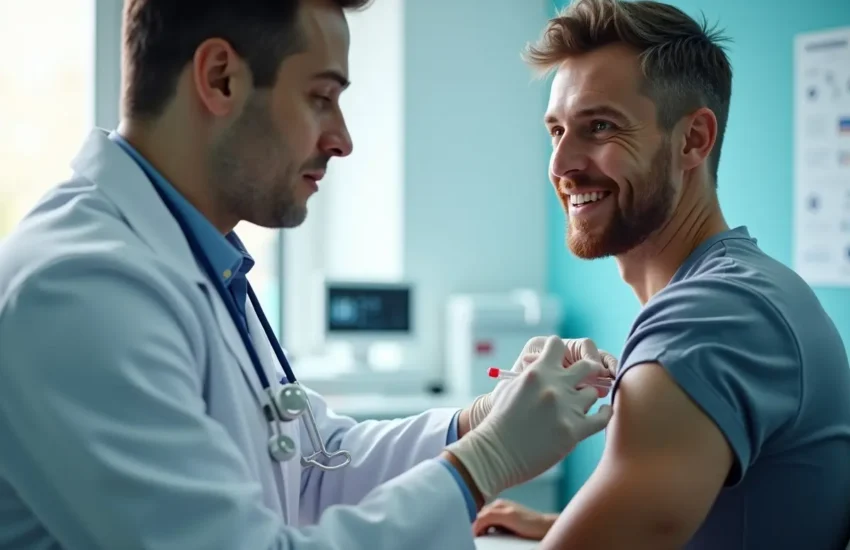Understanding Drug Testing – How to Pass Successfully
Drug testing is a common practice in the workplace, organized sports, and for legal purposes after an accident. It looks for the presence of illegal and legal drugs, including alcohol, in a sample, such as urine or hair.
You may also be tested for a drug of abuse taken for non-medical reasons or to monitor your adherence to prescription medication. This article will cover the most common types of drug tests and how to pass them successfully.
Unsupervised
Drug testing (also called toxicology screen or tox screen) involves analyzing a biological specimen such as urine, hair, blood, breath, or saliva/sweat for the presence of specified parent drugs or their metabolites. It is often used to help determine the cause of a person’s symptoms, diagnose substance abuse/dependence, and monitor treatment progress.
Its primary applications include performance-enhancing drug screening in sports, employers and parole/probation officers testing for drugs prohibited by law, and monitoring of prescription drug misuse.
Suppose you’re preparing for pre-employment screening and wondering how to pass a drug test. In that case, it’s crucial to be aware of the substances tested, understand detection times, and consider strategies such as detoxification or abstaining from drug use.
Most drug tests are supervised, meaning the lab technician will only be in the room while you pee. These are the most accessible types of tests to cheat. To pass, find out when you’re scheduled to test and avoid consuming any illicit substances until three days before your trial. It also helps to pee a lot, particularly first thing in the morning when your urine is most concentrated.
A supervised test is less common but can happen if you’ve failed a test and need to retest. To pass, make sure you’re fully clean on the day of your test and avoid any toxins like poppy seeds, certain medicines (including antidepressants), and second-hand cannabis smoke.
Also, make sure you understand your state’s laws on cannabis, as some offer protections for workers who test positive. This will help ensure the test is valid and prevent you from being discriminated against.
Observed
When a drug enters the body, it travels through the gastrointestinal tract and is absorbed by the liver and other organs. These processes break down the drug into different chemicals, known as metabolites, that can be detected in a urine sample. Drug testing typically takes place within a specific timeframe after a person last used the drug.
Observed urine drug tests require an employee to give a sample while being watched by a trained observer. These tests are usually done in regulated industries. They may be administered as pre-employment testing, for reasonable suspicion, or after a workplace accident. Some employers also use random drug testing as a deterrent for illegal behavior.
Observed urine tests are often the most invasive type of drug test. People can cheat on these tests by preparing their specimens before taking them. For instance, they can drink a lot of water to dilute the concentration of drugs in their urine and make it harder to detect. Various herbs can be taken orally to absorb toxins and reduce their presence in urine.
Other methods include using detox pills or a detox drink to mask the presence of drugs in the model. These methods aren’t foolproof and can still leave traces of the drug in the urine, but more is needed to cause a positive result.
Blood
Drug tests can check for substances in small blood samples, hair, breath, or, most commonly, urine. A phlebotomist or technician usually draws the model from a vein in your arm or hand. You may need to be told not to eat or drink for a certain amount before the test, and some trials require you to fast before the procedure. If the sight of needles makes you nervous, let the tester know in advance so they can try to distract you or help you through the process.
A phlebotomist will use a sharp tool called a lancet to puncture the skin and make it bleed; then, a needle will be attached to the lancet to collect the blood sample. The test will not hurt, but the hand might be uncomfortable.
You can ask the phlebotomist to use a numbing cream before drawing your model, but this can take extra time before you’ll be able to get the results. Some people experience dizziness or fainting at the sight of blood, but a drop in blood pressure often causes this and is not dangerous.
A phlebotomist may put a bandage on the site of your sample, and you might have a bruise where the needle went in. My bruises will fade over the next few days. If you’re a regular cannabis smoker, it will take at least two months for the drug metabolites to clear from your body. It would help if you researched your state’s laws to see what protections are offered in the event of a positive test.
Hair
Drug testing is now a regular component of safety, security, and operations in numerous professional fields. Drivers, pilots, and other transportation workers depend on a clean test to protect passengers and cargo. Construction and other jobs that require high levels of alertness can also benefit from a clean test. Even for those in sedentary office jobs, drug use can have a domino effect on the efficiency of operations and relationships with co-workers.
The good news is that passing a hair drug test isn’t very difficult. Hair tests offer a broader window for detection than urine or blood tests and are virtually immune to evasion through sample substitution and adulteration. They are also far more accurate than urinalysis tests and can detect drugs that may have been used within the past month.
It is essential to understand that the only way to guarantee a clean drug test result is to completely abstain from all drug usage for the entire time leading up to your drug screening. Using home remedies to cheat a drug test isn’t recommended and will likely result in the person failing their drug test. This can have serious repercussions, not only for their career but also for their family and financial stability. In addition, trying to beat a drug test can only delay the need for much-needed professional treatment.



